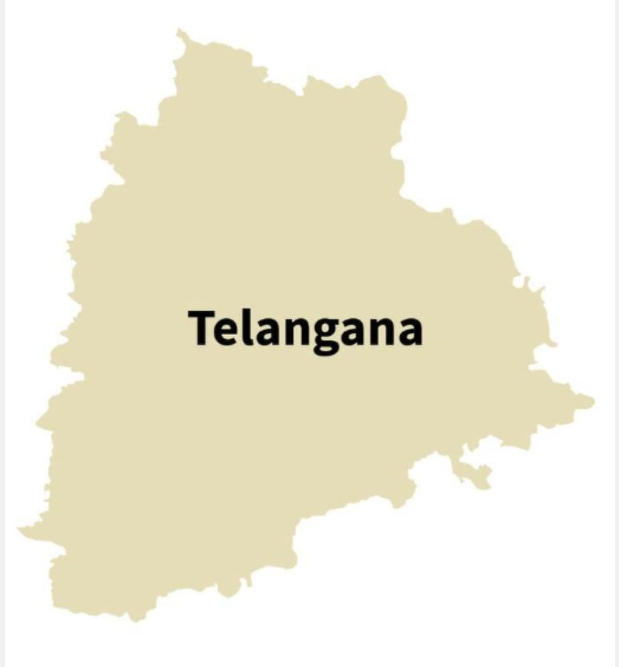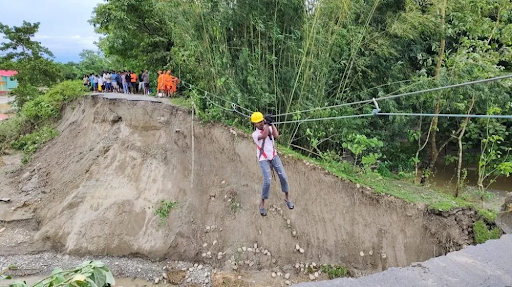Description
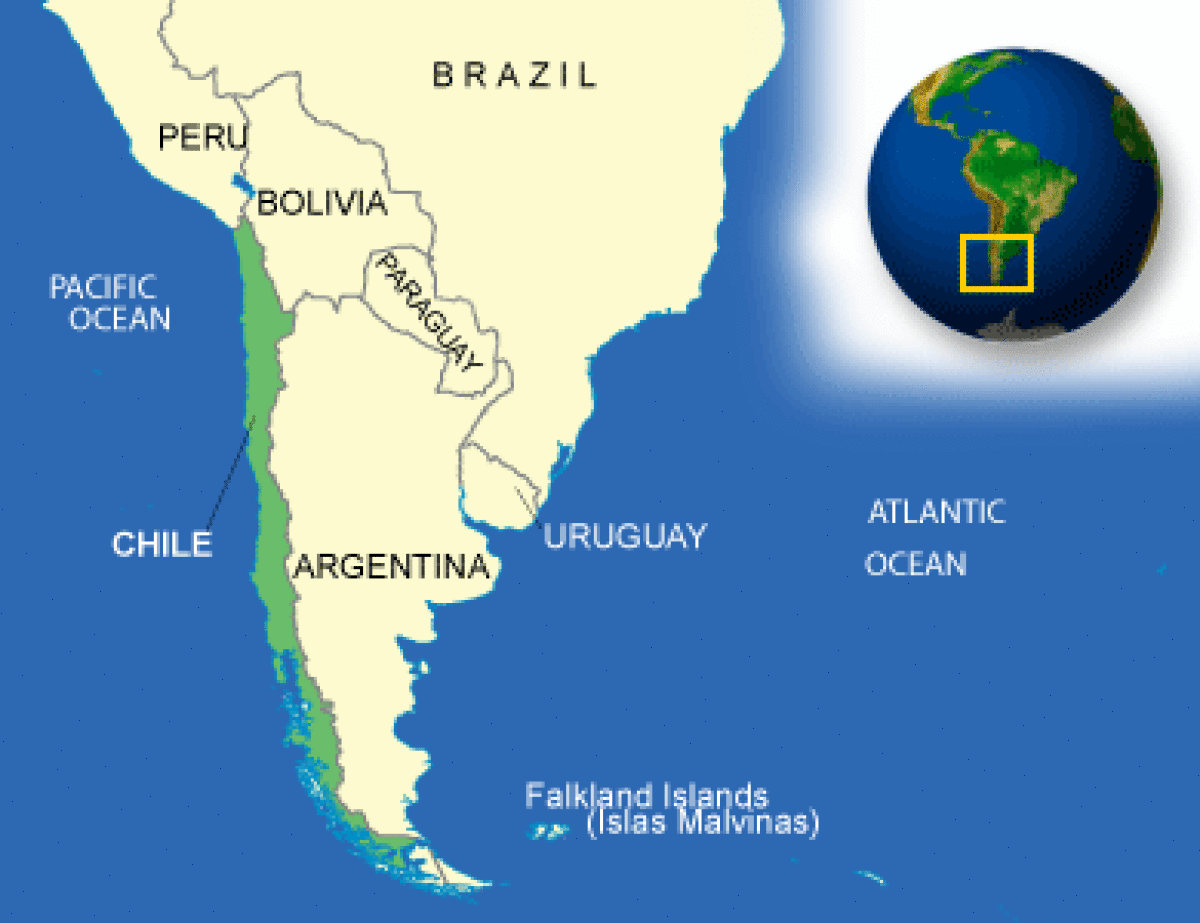
Disclaimer: Copyright infringement not intended.
Context
Chile records its deadliest wildfire in 123 years, may be linked to climate change.
Details
Chile
- Situated along the western seaboard of South America.
- A long, narrow country, it has an average width of only about 110 miles.
- Area wise it ranked 38th in the world.
- Share territorial border with Argentina (6,691 km), Bolivia (942 km), Peru (168 km)
- 6,893 m (22,615 ft)
- Chile exercises sovereignty over Easter Island, the Juan Fernández Archipelago, and the volcanic islets of Sala y Gómez, San Félix, and San Ambrosio, all of which are located in the South Pacific.
- Chile’s relief is for the most part mountainous, with the Andes range dominating the landscape. Highest point Ojos del Salado in Andes of Atacama Region. Lowest point Pacific Ocean, 0 m
- Because of the country’s extreme length it has a wide variety of climates, from the coastal desert beginning in the tropical north to the cold subantarctic southern tip.
- Chile is also a land of extreme natural events: volcanic eruptions, violent earthquakes, and tsunamis originating along major faults of the ocean floor periodically beset the country. Fierce winter storms and flash floods alternate with severe summer droughts.
10 Highest volcanoes of Chile
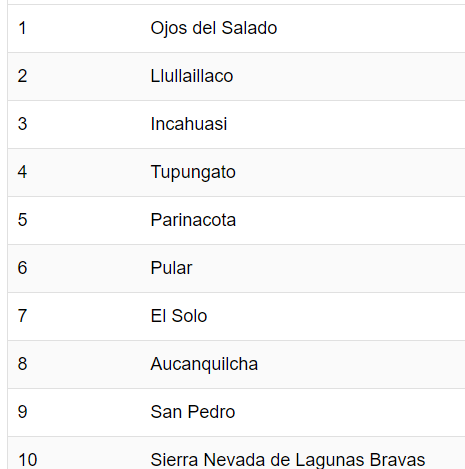
- Longest river Loa River, 440 km
- Largest lake General Carrera Lake
- Variety of Climates: Chile experiences a wide range of climates, including desert, Mediterranean, temperate, and subpolar. This diversity is primarily influenced by its geography, which includes the Andes Mountains, the Pacific Ocean, and the Atacama Desert.
- Atacama Desert: The Atacama Desert, located in northern Chile, is one of the driest places on Earth. Some parts of the desert have not received rainfall for centuries, making it an extreme arid environment.
- Mediterranean Climate: Central Chile, including the capital city Santiago, has a Mediterranean climate characterized by hot, dry summers and mild, wet winters. This region is known for its fertile valleys and is a major agricultural area.
- Rainforests in the South: Southern Chile is home to temperate rainforests, with abundant rainfall throughout the year. This region experiences relatively mild temperatures and lush vegetation, including dense forests and numerous lakes.
- Andean Influence: The presence of the Andes Mountains affects Chile's climate by creating a rain shadow effect. As moist air from the Pacific rises over the mountains, it releases precipitation on the western slopes, leaving the eastern slopes much drier.
- Coastal Influence: The Pacific Ocean has a moderating effect on Chile's coastal regions, helping to maintain more moderate temperatures compared to inland areas. Coastal cities like Valparaíso and Concepción experience cooler summers and milder winters.
- Climate Change Vulnerability: Chile is vulnerable to the impacts of climate change, including water scarcity, glacier retreat, and desertification. The country is actively working to mitigate these effects and transition to renewable energy sources.
Recent Wild life Fire in Chile
- At least 131 people have died in the wildfire that ravaged Chile in February 2024. Making it Five of the top 10 deadliest wildfires globally since 1900.
- This makes it the country’s deadliest wildfire since record-keeping began in 1900, according to the United Nations Office for Disaster Risk Reduction (UNDRR).
- The recent wildfires fall under the category of “large wildfires” with at least 26,000 hectares of area burnt.
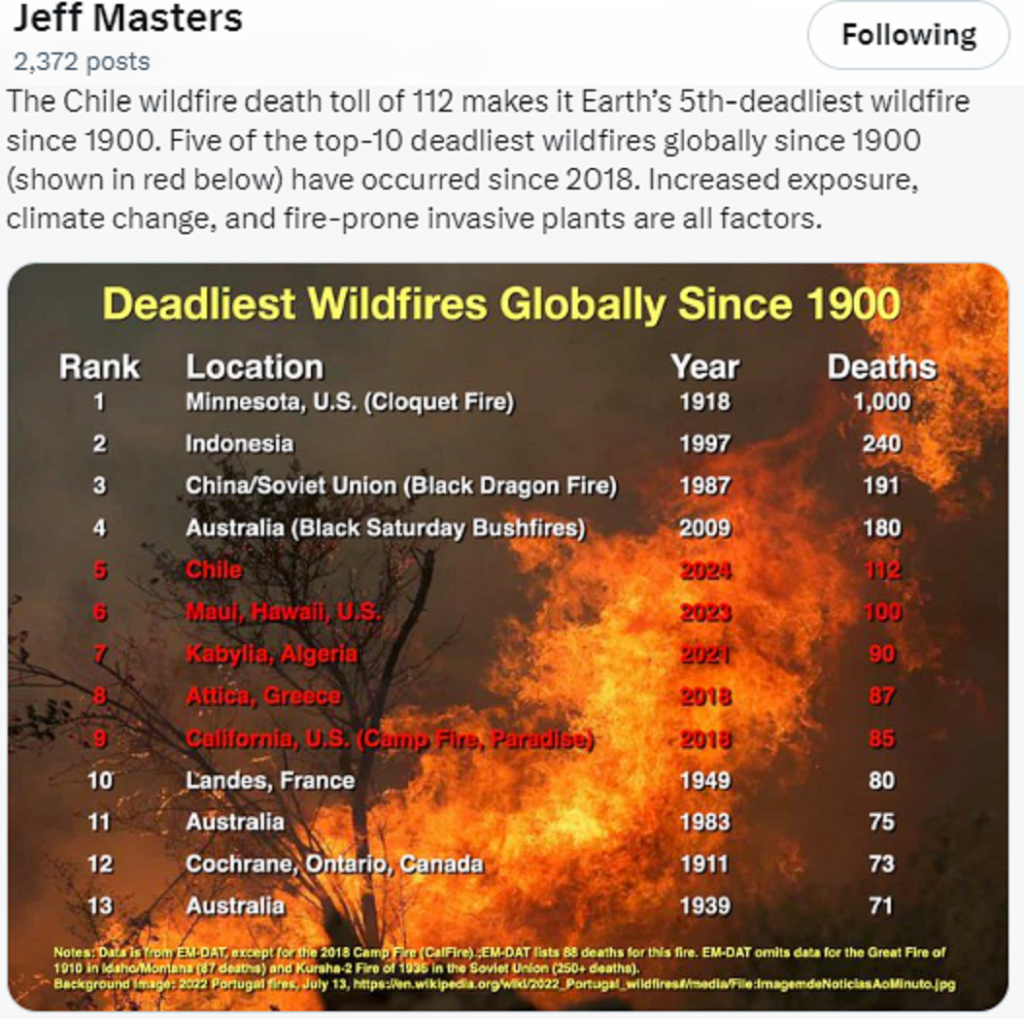
Is there a link with climate change?
- The recent fire is happening six years after the historic 2017 fire season and have started at a time when extreme heatwaves ravaged Chile and other parts of South America.
- There was a heatwave in central Colombia, central-southern Chile and central Argentina from January 21 to 25. The temperature in Santiago de Chile reached 98.1°F, the third-highest in 112 years.
- Colombia, which saw the hottest January in three decades, recorded dozens of blazes amid high temperatures last month. The month, known for torrential rains in the country, recorded widespread wildfires.
- The unusual intense and extreme wildfires forced the Colombia to declare a national disaster. This unusual event in Colombia in January was linked to high temperatures and drought, exacerbated by the climate phenomenon known as El Nino.
- Similarly, central Chile, including the Valparaíso region most affected due to the wildfires, recorded not only very high temperatures but also very low humidity and long severe droughts.
- The recent wildfires in Chile which began on February 2, 2024 may also be linked to climate change and El Nino, if the warnings of the Intergovernmental Panel on Climate Change (IPCC), the scientific studies and recent statements by the WMO and scientists are considered.
- In recent weeks, central Chile has had near-record warm temperatures, reaching as high as 42.9 degrees Celsius (109°F). These conditions have fuelled the fires. Extreme drought and extremely dangerous fire conditions have been brought about by the concomitant lack of rainfall.
- The burnt area nationwide due to wildfires has approximately tripled from 1981–2010 and 2014–2023, with notable increases in the majority of central Chile, according to a new study released January 2024.
- In February 2023, the concurrence of a severe drought and persistent heatwaves resulted in extreme fire weather conditions in central Chile.
- It is among the deadliest wildfire tragedies in South American history and a state of emergency was declared.

Way ahead
- The UN has raised concerns about the impact of the wildfires on natural sites too with unique ecosystems and biodiversity.
- The increasing frequency and intensity of wildfires driven by climate change pose a dire threat to wildlife and their ecosystems worldwide. As temperatures rise, weather patterns become more erratic, and droughts become more severe, the risk of catastrophic wildfires escalates, leading to devastating consequences for biodiversity and ecosystem health. Urgent action is needed to address the root causes of climate change and mitigate its impact on wildfire activity. This requires global cooperation, bold policy initiatives, and concerted efforts to transition to sustainable energy sources and reduce greenhouse gas emissions.
- Additionally, proactive measures such as improved land management practices, ecosystem restoration, and community resilience-building can help mitigate the effects of wildfires on wildlife and their habitats.
- By taking decisive action to combat climate change and adapt to its consequences, we can protect the precious biodiversity of our planet and secure a sustainable future for both wildlife and humanity.
- In this context, the management and risk mitigation strategies for wildfires be implemented immediately, particularly in light of climate change and extreme weather.
|
PRACTICE QUESTION
Q. Examine the reasons for rising incidents of forest fires across the world and steps that can be taken to contain
|








